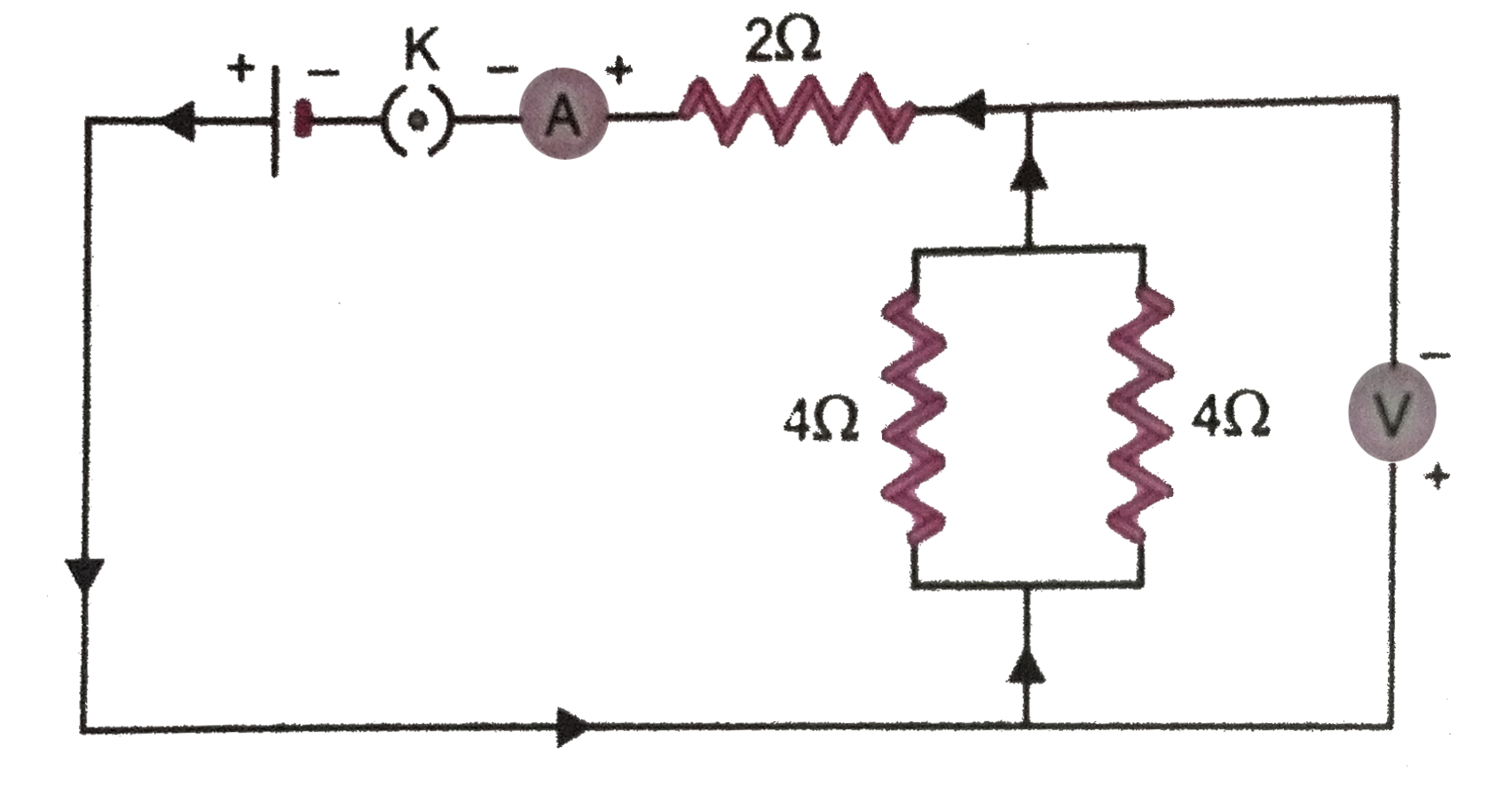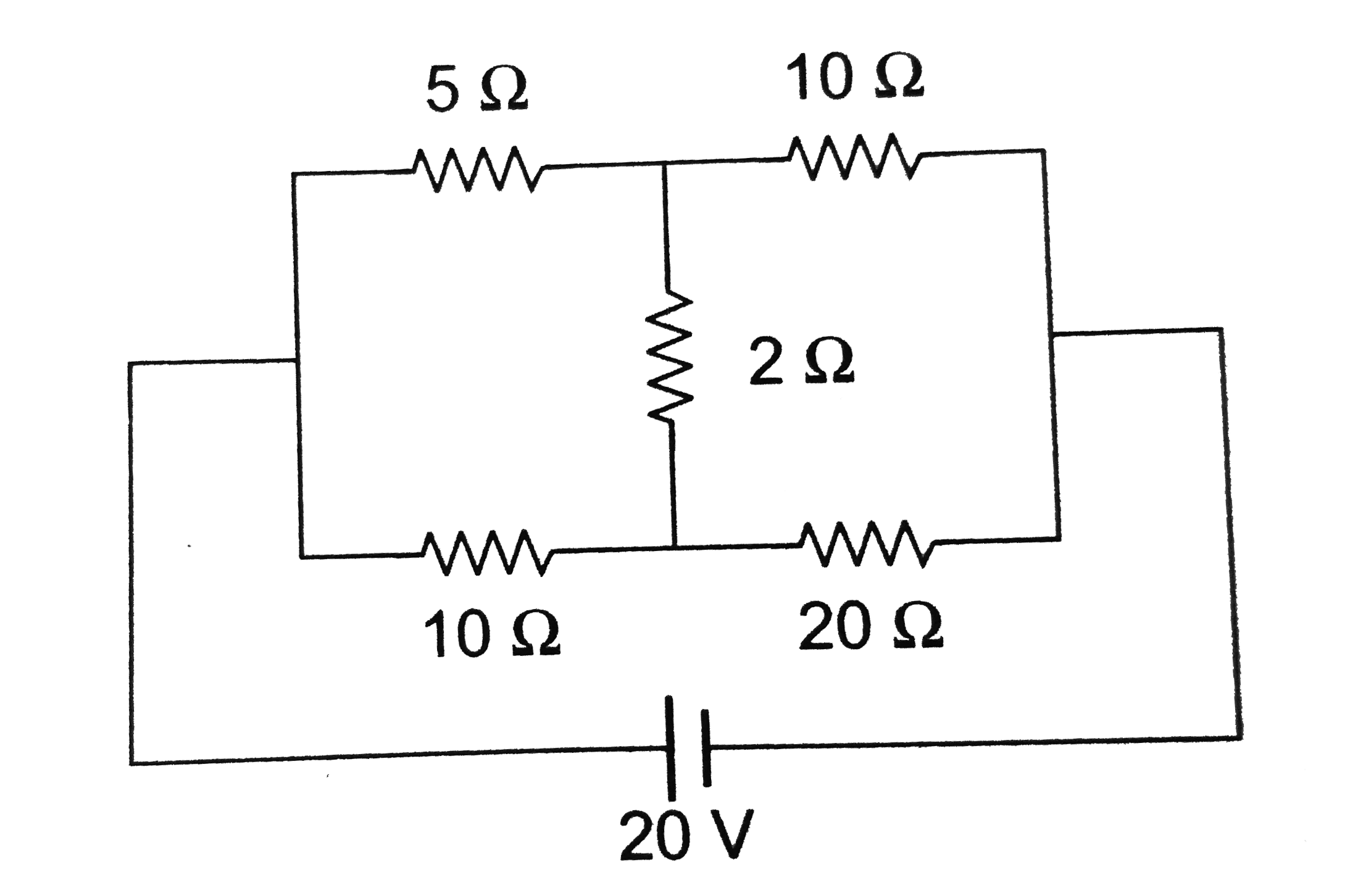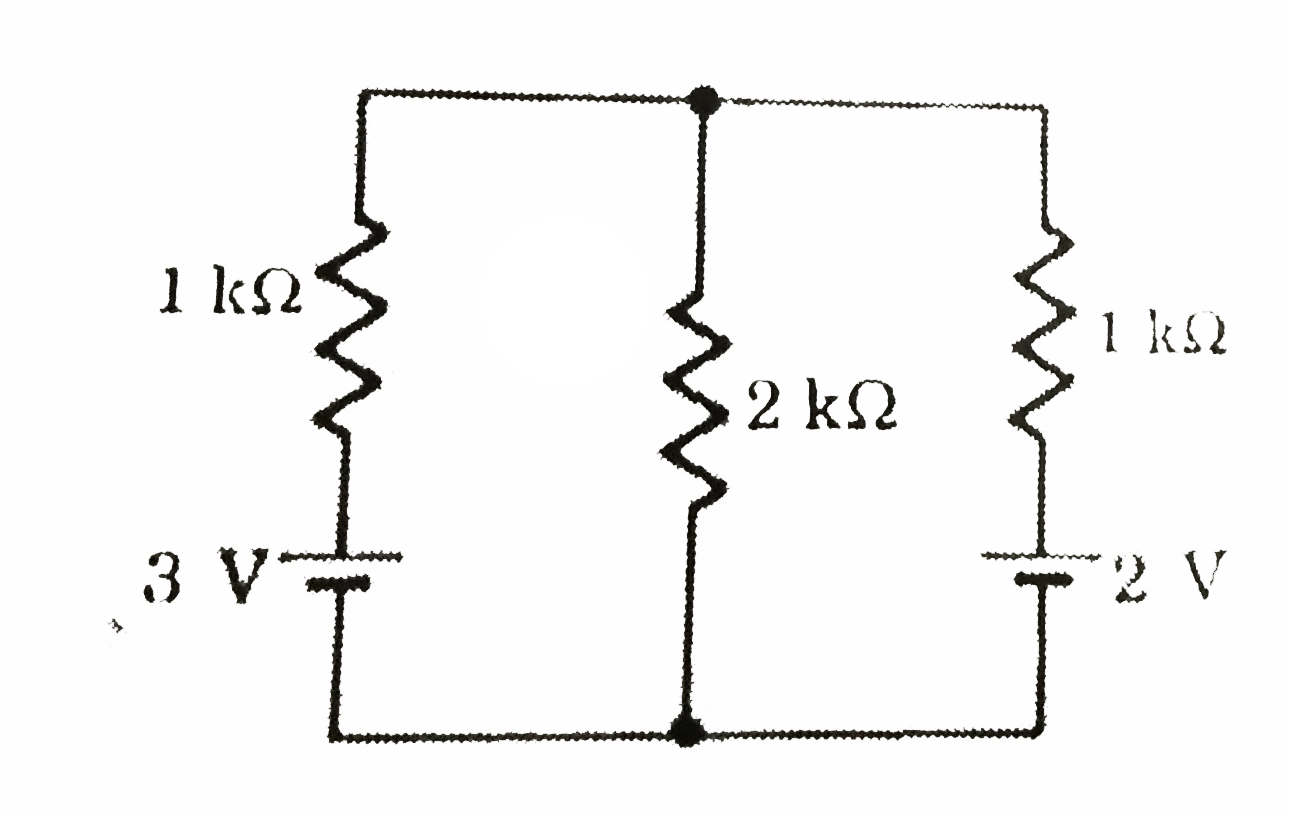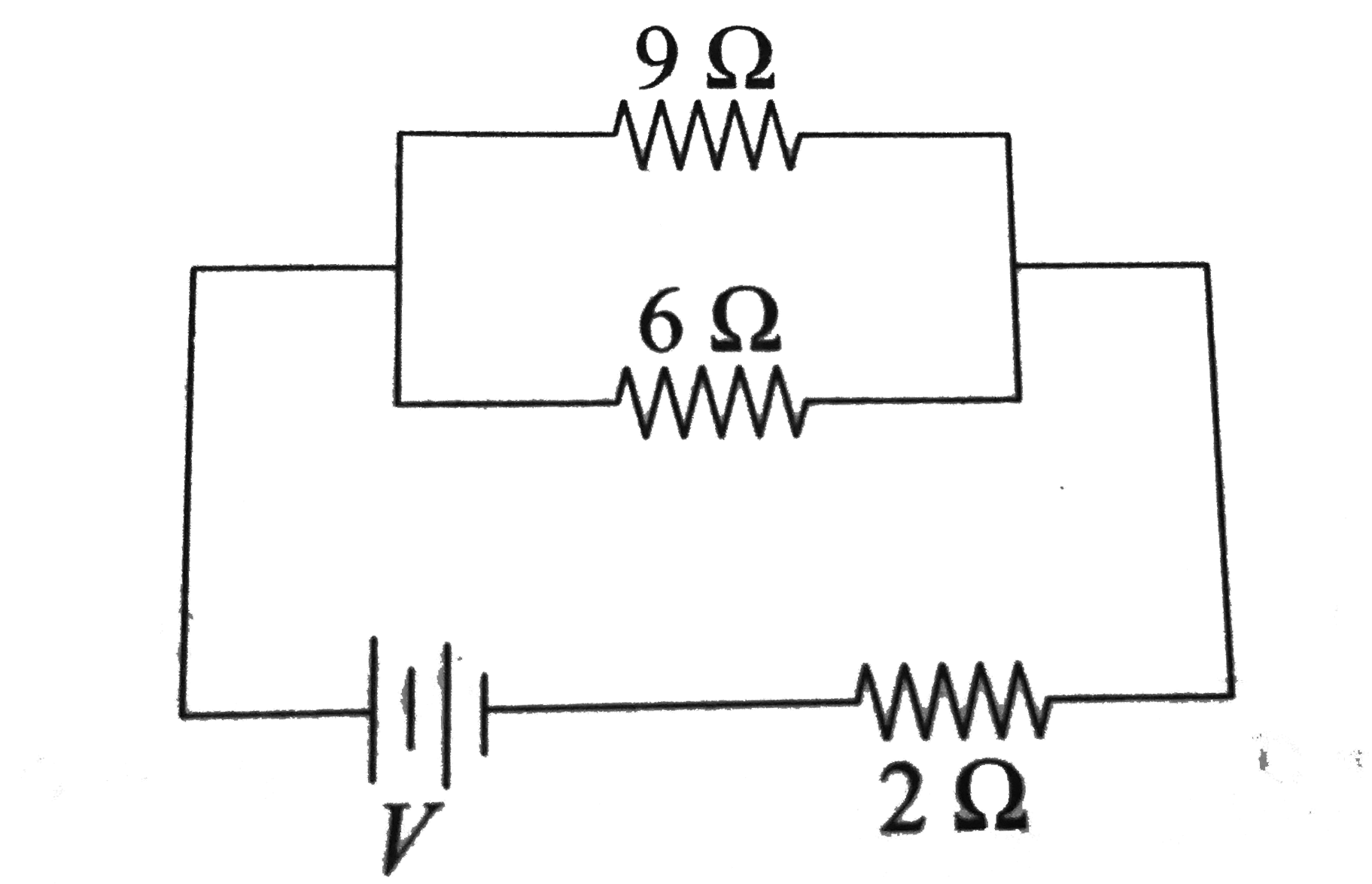Draw a circuit diagram of an electric circuit containing a cell, a key, an ammeter, a resistance of 2Ω in series with a combination of two resistors (4Ω each) in parallel and a voltmeter across the parallel combination. Will the potential difference across the 2Ω resistor be the same as that across the parallel combination of 4Ω resistors ? Give reason.
The required circuit diagram is shown in (Fig. 3.45). Since the resistance of parallel combination of two resistors (4Ω each) is also 2Ω, the pd across 2Ω resistor is the same as that across the parallel combination.
 .
.
Topper's Solved these Questions
- BOOK - PRADEEPCHAPTER - ELECTRICITYEXERCISE - (Exemplar)Long Answer6videos
ELECTRICITY
- BOOK - PRADEEPCHAPTER - ELECTRICITYEXERCISE - (Additional)Very Short Answer47videos
ELECTRICITY
- BOOK - PRADEEPCHAPTER - ELECTRICITYEXERCISE - NCERT Exercise18videos
ELECTRICITY
- BOOK - PRADEEPCHAPTER - MAGNETIC EFFECTS OF ELECTRIC CURRENTEXERCISE - Mock Test21videos
MAGNETIC EFFECTS OF ELECTRIC CURRENT
Similar Questions
Draw a circuit diagram of an electric circuit containing a cell, a key, an ammeter, a resistor of 2Ω in series with a combination of two resistors (4Ω each) in parallel and a voltmeter across the parallel combination. Will the potential difference across the 2Ω resistor be the same as that across the parallel combination of 4Ω resistors? Give reason.
View SolutionDraw a circuit diagram of an electric circuit containing a cell, a key, an ammeter, a resistance of 2Ω in series with a combination of two resistors (4Ω each) in parallel and a voltmeter across the parallel combination. Will the potential difference across the 2Ω resistor be the same as that across the parallel combination of 4Ω resistors ? Give reason.
View Solution
Knowledge Check
- Question 1 - Select One
The potential drop across the 3Ω resistor is
 A1VB1.5VC2VD3V
A1VB1.5VC2VD3V - Question 2 - Select One
In the circuit shown below:

The potential difference across the 3Ω resistor is:A19VB12VC1VD2V - Question 3 - Select One
In the given circuit diagram, potential difference across 2Ω resistance is
 A4VB6VC20VDzero
A4VB6VC20VDzero
Draw a circuit diagram of an electric circuit containing a cell, a key, an ammeter, a resistance of 4Ω in series with a combination of two resistors (8Ω) in parallel and a voltmeter across the parallel combination. Each of them dissipate maximum energy and can withstand a maximum power of 16W without melting. Find the maximum current that can flow through the three resistors.
View SolutionDraw the circuit diagram of an electric circuit containing a battery of 6 V, a key , an ammeter , a resistor of 4Ω in series with a combination of two resistors of 8Ω each in parallel, and a voltmeter across the parallel combination.
(a) Calculate the resistance of the circuit .
(b) Find the current flowing in the circuit.
(c) What will be the voltage across the parallel combination of resistors?View SolutionDraw a circuit diagram of an electric circuit containing a cell, a key, an ammeter, a resistance of 4Ω in series with a combination of two resistors (8Ω) in parallel and a voltmeter across the parallel combination. Each of them dissipate maximum energy and can withstand a maximum power of 16W without melting. Find the maximum current that can flow through the three resistors.
View Solution
Calculate the potential difference across the 2k Ω resistor in the circuit shown in figure. The internal resistance of the cells are negligible.View SolutionIf power dissipated in the 9Ω resistor in the resistor shown is 36W, the potential difference across the 2Ω resistor is
 View Solution
View Solution

